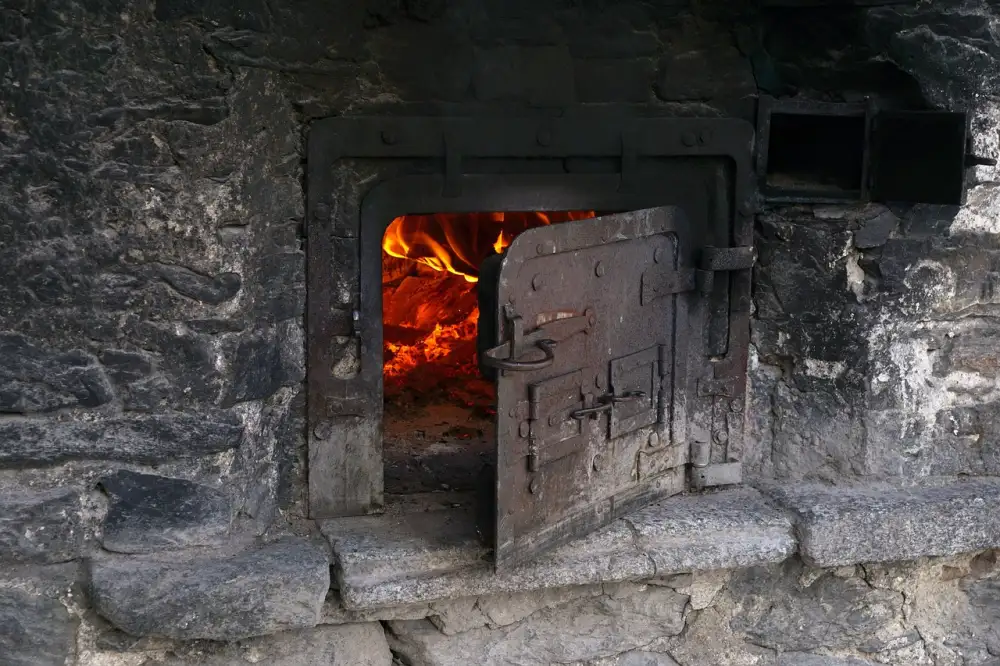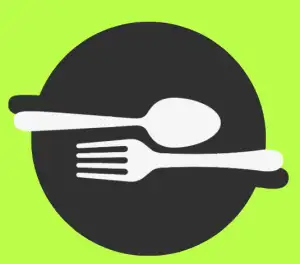Mastering the Art of Cooking with a Convection Oven: Your Ultimate Guide to Operating a Convection Oven at Home

- Understanding the Basics of a Convection Oven
- Preheating the Convection Oven
- Adjusting Cooking Time and Temperature
- Proper Placement of Cookware in the Convection Oven
- Utilizing the Convection Fan for Even Cooking
- Tips for Baking in a Convection Oven
- Guidelines for Roasting and Broiling in a Convection Oven
- Cleaning and Maintenance of a Convection Oven
Convection ovens have revolutionized the way we cook, offering faster and more efficient results compared to traditional ovens. These appliances are equipped with a fan that circulates hot air throughout the oven cavity, ensuring even cooking and browning. Whether you're a seasoned chef or an amateur cook, mastering the art of cooking with a convection oven can elevate your culinary skills to new heights. In this ultimate guide, we will explore the basics of operating a convection oven at home, from preheating and adjusting cooking time to utilizing the convection fan for optimal results. Get ready to embark on a flavorful journey as we delve into the world of convection cooking!
Understanding the Basics of a Convection Oven
A convection oven is a kitchen appliance that uses a fan to circulate hot air around the food, resulting in faster and more even cooking. Unlike traditional ovens, which rely on radiant heat, convection ovens distribute heat evenly throughout the cooking chamber.
The main advantage of a convection oven is its ability to cook food faster than conventional ovens. The circulating hot air reduces cooking time by up to 25%, making it an ideal choice for busy individuals who want to save time in the kitchen.
In addition to faster cooking times, convection ovens also provide more even heat distribution. The fan ensures that hot air reaches every corner of the oven, eliminating cold spots and ensuring that your food cooks evenly.
It's important to note that not all recipes are suitable for convection cooking. Some delicate dishes, such as soufflés or custards, may not fare well in a convection oven due to the intense airflow. However, most recipes can be easily adapted for convection cooking with slight adjustments in temperature and cooking time.
By understanding the basics of how a convection oven works, you can make the most out of this versatile appliance and elevate your culinary skills to new heights.
Preheating the Convection Oven
Before you start cooking with a convection oven, it is essential to preheat it. Preheating ensures that the oven reaches the desired temperature and provides consistent heat throughout the cooking process. To preheat a convection oven, simply set the temperature according to your recipe's instructions and allow it to heat up for about 10-15 minutes. This step is crucial as it helps in achieving optimal cooking results and ensures that your food cooks evenly and thoroughly. Always remember to preheat your convection oven before starting any culinary adventure!
Adjusting Cooking Time and Temperature
One of the key advantages of a convection oven is its ability to cook food faster than a conventional oven. This is due to the circulating hot air that surrounds the food, ensuring even cooking. However, it's important to note that cooking times and temperatures may need to be adjusted when using a convection oven.
When using a recipe designed for a conventional oven, you can typically reduce the cooking time by about 25% when using a convection oven. This is because the hot air circulation speeds up the cooking process. It's always best to keep an eye on your food and check for doneness earlier than the recommended time.
In terms of temperature, you can generally reduce it by about 25°F (15°C) when using a convection oven. For example, if a recipe calls for baking at 350°F (175°C), you can set your convection oven to 325°F (160°C). This adjustment helps prevent overcooking or burning your dishes.
Keep in mind that these are general guidelines and may vary depending on your specific convection oven model. It's always advisable to consult your appliance's manual for more precise instructions on adjusting cooking time and temperature.
By mastering the art of adjusting cooking time and temperature in your convection oven, you'll be able to achieve perfectly cooked meals every time. Experiment with different recipes and keep track of any adjustments you make so that you can replicate successful results in the future.
Proper Placement of Cookware in the Convection Oven
When using a convection oven, it is important to understand how to properly place your cookware for optimal cooking results. Here are some guidelines to follow:
1. Allow for Adequate Airflow: To ensure even cooking, leave enough space between your dishes and the walls of the oven. This allows hot air to circulate freely around the food.
2. Use Low-sided and Light-colored Pans: Opt for low-sided pans as they allow hot air to reach the food more efficiently. Additionally, light-colored pans reflect heat better than dark ones, preventing uneven browning.
3. Avoid Overcrowding: Do not overcrowd the oven with too many dishes at once. This can obstruct airflow and lead to uneven cooking. If necessary, cook in batches or use multiple racks.
4. Position Cookware on Center Racks: For best results, place your cookware on center racks rather than lower or upper ones. This ensures that the food receives consistent heat from all sides.
By following these placement tips, you can make the most out of your convection oven and achieve perfectly cooked meals every time.
Utilizing the Convection Fan for Even Cooking
One of the key features of a convection oven is its powerful fan, which circulates hot air throughout the cooking chamber. This fan helps to distribute heat evenly, ensuring that your food cooks uniformly. To achieve the best results, it's important to understand how to utilize this convection fan effectively.
Firstly, make sure to leave enough space for proper airflow in the oven. Avoid overcrowding the oven with too many dishes as this can obstruct the circulation of hot air and lead to uneven cooking. Allow at least an inch of space between each dish.
Secondly, when using the convection function, it is recommended to lower the cooking temperature by about 25 degrees Fahrenheit compared to a traditional recipe. The circulating hot air in a convection oven cooks food faster and more efficiently, so adjusting the temperature will prevent overcooking.
Additionally, be mindful of reducing cooking time when using a convection oven. As the hot air circulates more efficiently, food tends to cook faster than in a conventional oven. Keep an eye on your dishes and check for doneness a few minutes earlier than usual.
Lastly, remember to use shallow pans or baking sheets with low sides when utilizing the convection fan. This allows for better airflow around the food and promotes even browning and crisping.
By understanding how to properly utilize the convection fan in your oven, you can achieve perfectly cooked meals with consistent results every time. Experiment with different recipes and techniques while keeping these tips in mind, and you'll soon become a master at harnessing the power of your convection oven for even cooking perfection.
Tips for Baking in a Convection Oven
1. Reduce the temperature: Since convection ovens circulate hot air, they tend to cook food faster than conventional ovens. To prevent over-browning or drying out your baked goods, reduce the temperature by about 25 degrees Fahrenheit.
2. Use shallow pans: For optimal heat circulation, use shallow baking pans or sheets instead of deep ones. This allows the hot air to reach all sides of the food evenly, resulting in a more uniform bake.
3. Rotate the pans: To ensure even browning, rotate the baking pans halfway through the cooking time. This helps to avoid any hot spots that may occur due to the convection fan's airflow.
4. Monitor baking time: Keep a close eye on your baked goods as they may cook faster in a convection oven. Start checking for doneness a few minutes earlier than the recipe suggests and adjust accordingly.
5. Avoid overcrowding: Leave enough space between items on the baking tray to allow proper air circulation. Overcrowding can lead to uneven cooking and affect the overall quality of your baked goods.
6. Check for doneness with care: Use visual cues and toothpick tests to determine if your baked goods are done. Due to faster cooking times, it's important not to overbake them.
Remember these tips when baking in a convection oven to achieve perfectly golden and evenly cooked treats every time!
Guidelines for Roasting and Broiling in a Convection Oven
Roasting and broiling are popular cooking methods that can be enhanced with the use of a convection oven. When roasting meats or vegetables, it is important to preheat the oven to ensure even cooking. Set the temperature according to your recipe, but reduce it by 25 degrees Fahrenheit since convection ovens cook faster.
For roasting, place the food on a rack or in a shallow pan to allow air circulation. This will result in crispy exteriors and juicy interiors. Remember to leave enough space between items for proper heat circulation.
When broiling, use the broiler pan provided with your convection oven or a similar shallow pan. Position the food on the top rack, close to the heating element. Keep an eye on it as broiling can quickly char or burn food.
To achieve optimal results when roasting or broiling, monitor the cooking process closely. The convection fan will help distribute heat evenly, resulting in faster and more efficient cooking. However, be mindful of potential hot spots in your oven and rotate pans if necessary.
Remember to use oven mitts when handling hot cookware and always follow safety precautions while using a convection oven. With practice and experimentation, you will soon master the art of roasting and broiling in your convection oven, creating delicious meals with ease.
Cleaning and Maintenance of a Convection Oven
Cleaning and maintaining your convection oven is essential for its longevity and optimal performance. After each use, allow the oven to cool down before starting the cleaning process. Start by removing any food debris or spills from the interior using a damp cloth or sponge. For stubborn stains, a mixture of baking soda and water can be used as a gentle scrub. Remember to avoid using abrasive cleaners or harsh chemicals that could damage the oven's surfaces.
Next, clean the oven racks by soaking them in warm soapy water and scrubbing off any residue with a soft brush. Rinse them thoroughly and dry before placing them back into the oven.
To clean the convection fan, remove it carefully according to the manufacturer's instructions. Use a soft brush or cloth to gently remove any dust or grease buildup from the fan blades. Be cautious not to bend or damage the blades during this process.
The exterior of the convection oven can be wiped down with a mild detergent and water solution. Avoid using abrasive materials that could scratch or damage the surface.
Regular maintenance includes checking and replacing any worn-out gaskets or seals that may affect the oven's efficiency. It is also important to regularly inspect and clean the vents to ensure proper airflow.
Lastly, refer to your convection oven's user manual for specific instructions on self-cleaning features if available. Follow these guidelines carefully to prevent any accidents or damage.
By following these cleaning and maintenance practices, you can ensure that your convection oven remains in top condition, allowing you to continue enjoying delicious meals cooked with precision and efficiency.
In conclusion, mastering the art of cooking with a convection oven can greatly enhance your culinary skills. By understanding the basics of a convection oven and learning how to adjust cooking time and temperature, you can achieve perfectly cooked dishes every time. Proper placement of cookware and utilizing the convection fan will ensure even cooking throughout. Whether you're baking, roasting, or broiling, a convection oven offers versatility and efficiency. With regular cleaning and maintenance, your convection oven will continue to perform at its best. So go ahead, explore the world of flavors and textures that await your taste buds with a convection oven in your kitchen!
Published: 10. 01. 2024
Category: Home



